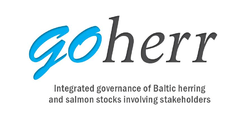Goherr: Relevant literature/Dioxins: Difference between revisions
mNo edit summary |
(Goherr template added) |
||
| (3 intermediate revisions by one other user not shown) | |||
| Line 2: | Line 2: | ||
[https://www.julkari.fi/handle/10024/125694 Airaksinen, R. (2009). Itämeren silakan ympäristömyrkkyjen vähentyminen vuosina 1978-2009 ja mahdolliset terveydelliset ja taloudelliset hyödyt. Kansallinen Itämeri-tutkijoiden foorumi 2013; 10/2013] | [https://www.julkari.fi/handle/10024/125694 Airaksinen, R. (2009). Itämeren silakan ympäristömyrkkyjen vähentyminen vuosina 1978-2009 ja mahdolliset terveydelliset ja taloudelliset hyödyt. Kansallinen Itämeri-tutkijoiden foorumi 2013; 10/2013] | ||
[http://en.opasnet.org/w/File:Assmuth_Jalonen_Dioxin_risk_assessment_2005.pdf Assmuth, T., Jalonen, P. (2005). Risks and management of dioxin-like compounds in Baltic Sea fish: An integrated assessment. Nordic Council of Ministers, Copenhagen.] | |||
[http://www.helcom.fi/Lists/Publications/Dioxins%20in%20the%20Baltic%20Sea.pdf HELCOM (2004). Dioxins in the Baltic Sea.] | [http://www.helcom.fi/Lists/Publications/Dioxins%20in%20the%20Baltic%20Sea.pdf HELCOM (2004). Dioxins in the Baltic Sea.] | ||
[http://www.helcom.fi/Lists/Publications/BSEP120B.pdf HELCOM (2010). Hazardous substances in the Baltic Sea – An integrated thematic assessment of hazardous substances in the Baltic Sea. Balt. Sea Environ. Proc. No. 120B.] | [http://www.helcom.fi/Lists/Publications/BSEP120B.pdf HELCOM (2010). Hazardous substances in the Baltic Sea – An integrated thematic assessment of hazardous substances in the Baltic Sea. Balt. Sea Environ. Proc. No. 120B.] | ||
[http://www.cohiba-project.net/management/documents/. Krupanek, J., Andersson, H., Dudutyte Z. et al. (2011). COHIBA Guidance Document No.1 for dioxins (PCDD), furans (PCDF) and dioxin-like polychlorinated biphenyls (PCBs).] | |||
[http://www.julkari.fi/handle/10024/79884 Tuomisto, J. T. (2011). Dioksiinit ja PCB-yhdisteet : synopsis. Terveyden ja hyvinvoinnin laitos (THL)] | [http://www.julkari.fi/handle/10024/79884 Tuomisto, J. T. (2011). Dioksiinit ja PCB-yhdisteet : synopsis. Terveyden ja hyvinvoinnin laitos (THL)] | ||
| Line 23: | Line 29: | ||
Kulkarni, P. S., Crespo, J. G., & Afonso, C. a M. (2008). Dioxins sources and current remediation technologies - A review. Environment International, 34 (1), 139–153. [http://www.sciencedirect.com/science/article/pii/S0160412007001390 doi:10.1016/j.envint.2007.07.009] | Kulkarni, P. S., Crespo, J. G., & Afonso, C. a M. (2008). Dioxins sources and current remediation technologies - A review. Environment International, 34 (1), 139–153. [http://www.sciencedirect.com/science/article/pii/S0160412007001390 doi:10.1016/j.envint.2007.07.009] | ||
Miller, A., Hedman, J. E., Nyberg, E., Haglund, P., Cousins, I. T., Wiberg, K., & Bignert, A. (2013). Temporal trends in dioxins (polychlorinated dibenzo-p-dioxin and dibenzofurans) and dioxin-like polychlorinated biphenyls in Baltic herring (Clupea harengus). Marine Pollution Bulletin, 73 (1), 220–30. [http://www.ncbi.nlm.nih.gov/pubmed/23806670 doi:10.1016/j.marpolbul.2013.05.015] | |||
{{Goherr}} | |||
Latest revision as of 10:44, 3 September 2015
Reports
HELCOM (2004). Dioxins in the Baltic Sea.
Scientific articles
Airaksinen, R., Hallikainen, A., Rantakokko, P., Ruokojärvi, P., Vuorinen, P. J., Parmanne, R., Verta, M., Mannio, J., Kiviranta, H. (2014). Time trends and congener profiles of PCDD/Fs, PCBs, and PBDEs in Baltic herring off the coast of Finland during 1978-2009. Chemosphere, 114, 165–71. doi:10.1016/j.chemosphere.2014.03.097
Assefa, A. T., Sobek, A., Sundqvist, K. L., Cato, I., Johnsson, P., Tysklind, M., & Wiberg, K. (2014). Temporal Trends of PCDD/Fs in Baltic Sea Sediment Cores Covering the 20th Century. Environmental Science & Technology, 48 (2), 947–953. DOI: 10.1021/es404599z
Assefa, A. T., Tysklind, M., Sobek, A., Sundqvist, K. L., Geladi, P., & Wiberg, K. (2014). Assessment of PCDD/F Source Contributions in Baltic Sea Sediment Core Records. Environmental Science & Technology, 48 (16), 9531–9539. DOI: 10.1021/es502352p
Assmuth, T. (2011). Policy and Science Implications of the Framing and Qualities of Uncertainty in Risks: Toxic and Beneficial Fish from the Baltic Sea. Ambio, 40 (2), 158–169. doi:10.1007/s13280-010-0127-z
Hites, R. A. (2011). Dioxins: An Overview and History. Environmental Science & Technology, 45 (1), 16-20. DOI: 10.1021/es1013664
Kulkarni, P. S., Crespo, J. G., & Afonso, C. a M. (2008). Dioxins sources and current remediation technologies - A review. Environment International, 34 (1), 139–153. doi:10.1016/j.envint.2007.07.009
Miller, A., Hedman, J. E., Nyberg, E., Haglund, P., Cousins, I. T., Wiberg, K., & Bignert, A. (2013). Temporal trends in dioxins (polychlorinated dibenzo-p-dioxin and dibenzofurans) and dioxin-like polychlorinated biphenyls in Baltic herring (Clupea harengus). Marine Pollution Bulletin, 73 (1), 220–30. doi:10.1016/j.marpolbul.2013.05.015


